
astronauticsnow.com/uscastronauts
University of Southern California (USC)
USC Astronauts – Trojans in Space

USC History: Enemy Amongst Trojans. A Spy at USC
USC Astronautics Program: Acta Astronautica, v. 103, 92-105, 2014 (pdf) and IAC-18-E1.4.11, 2018 (pdf)
Spaceflight History: Socks for the First Cosmonaut of Planet Earth
USC Master of Science in Astronautical Engineering (MS ASTE)
USC Astronautics
MS ASTE update

Sputnik Explorer Vanguard Astronautics Missile defense Baikonur Tyuratam Saryshagan Rocket equation Rocket espionage U-2
(alphabetical order)
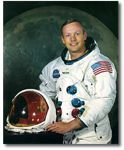
Neil A. Armstrong (1930-2012)
Master of Science in Aerospace Engineering from USC
Gemini 8 (1966)
Apollo 11 (1969)
N. Armstrong, Lunar Landing Techniques, USC Engineer, v. 21, n. 33, pp. 21-32, 1970
Neil Armstrong at USC and on the Moon: Apollo 11 Lunar Landing
(186 pages; 80+figures/photos), Interstellar Trail Press, 2025
On January 22, 1970, a "distinguished 'member of the student body'" of the School of Engineering of the University of Southern California (USC) gave a one-hour seminar on techniques and procedures of lunar landing. He thus completed the requirements for the Master's degree in aerospace engineering, which was conferred on him after the lecture. The name of the student was Neil A. Armstrong. Six months earlier, he commanded the Apollo 11 lunar mission and became the first man to set foot on the moon.
The story begins with Armstrong's graduate studies at USC in the 1950s. Then, it describes his return to the university campus on that January day in 1970 for the festive dedication of a new science center in the morning.
Next, the book turns its attention to Apollo, a visionary program to land men on the moon that required the concentration of enormous economic, scientific, and technological resources of the country. Numerous technical details show the challenges of developing, designing, and operating the Apollo spacecraft, particularly its Lunar Modules, which landed the astronauts on the lunar surface, as well as training the crews for this task. The recounted complexity of Apollo 11's historic landing in the Sea of Tranquility on the moon puts into perspective this engineering accomplishment. Many quotes give readers a flavor of how participants viewed the events.
Finally, the story returns to Neil Armstrong's visit to USC and his afternoon lecture on the guidance and control of the Lunar Module Eagle during the powered descent and landing on the moon, one of the most challenging elements of the Apollo missions.
Book: paperback hardcover Kindle Print Replica
Neil Armstrong: From Lunar Landing to Master of Science Degree
75-th International Astronautical Congress, IAC-24-E4.IP.9, Milan, Italy, 2024.
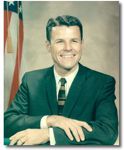
Charles A. Bassett, II (1931-1966)
graduate work (no degree) at USC
scheduled to fly on Gemini 9 (1966)
died in the crash of a T-38 jet
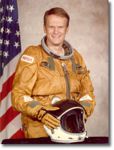
Karol J. Bobko (b.1937)
Master of Science in Aerospace Engineering from USC in 1970
STS-6 Challenger (1983)
STS-51D Discovery (1985)
STS-51J Atlantis (1985)
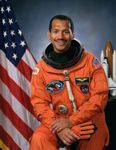
Charles F. Bolden (b. 1946)
Master of Science in System Management from USC in 1977
STS-61C Columbia (1986)
STS-31 Discovery (1990)
STS-45 Atlantis (1992)
STS-60 Discovery (1994)
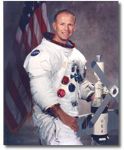
Gerald P. Carr (b. 1932)
Bachelor of Science in Mechanical Engineering from USC (Navy ROTC) in 1954
Skylab-4 (1973-1974)
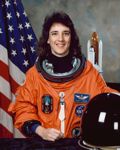
Nancy J. Currie (b. 1958)
Master of Science in Safety Engineering from USC in 1985
STS-57 Endeavour (1993)
STS-70 Discovery (1995)
STS-88 Endeavour (1998)
STS-109 Columbia (2002)
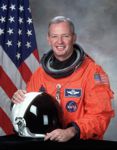
Brian Duffy (b. 1953)
Master of Science in Systems Management from USC in 1981
STS-45 Atlantis (1992)
STS-57 Endeavour (1993)
STS-72 Endeavour (1996)
STS-92 (2000)
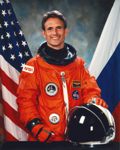
J. M. Linenger (b. 1955)
Master of Science in Systems Management from USC in 1988
STS-64 Discovery (1966)
launched STS-81 Atlantis, 4-month stay on-board Mir, return STS-84 Atlantis (1997)
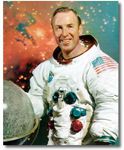
James A. Lovell (b. 1928)
Aviation Safety School (non-degree) at USC in 1961
Gemini 7 (1965)
Gemini 12 (1966)
Apollo 8 (1968)
Apollo 13 (1970)
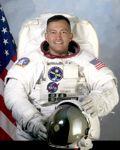
Carlos I. Noriega (b. 1959)
Bachelor of Science in Computer Science from USC (Navy ROTC) in 1981
STS-84 Atlantis (1997)
STS-97 Endeavour (2000)
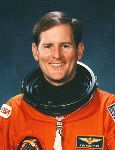
Kenneth S. Reightler, Jr. (b. 1951)
Master of Science in Systems Management from USC
STS-48 Discovery (1991)
STS-60 Discovery (1994)
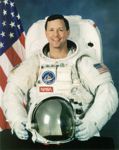
Pierre J. Thuot (b. 1955)
Master of Science in Systems Management from USC in 1985
STS-36 Atlantis (1990)
STS-49 Endeavour (1992)
STS-62 Columbia (1994)
 Educational video
clips – common satellite orbits
Educational video
clips – common satellite orbits
Global Positioning System GPS constellation; geostationary GEO
orbit; orbit circularization by atmospheric drag; Molniya orbit;
regression of nodes; prograde, retrograde, and sun-synchronous orbits;
rotation of apsides; Molniya communication relay; effect of solar
radiation pressure
|
|
|
Public policy. Copyright © 2004–2016. All rights reserved.